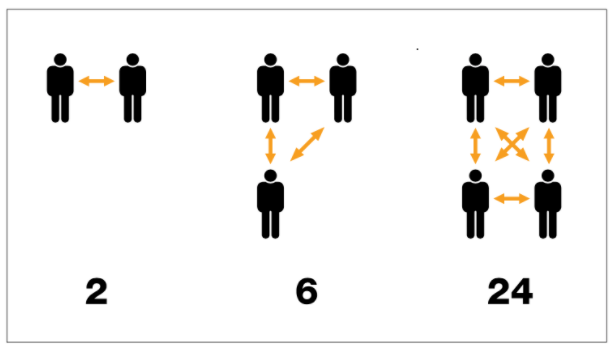Can Your Business Survive The Inevitable Growth Paradox?

You can't sustain profitable growth in a competitive market if you're a disaster internally, and you can't maintain a high-performance culture internally for long if you're failing in the marketplace.
– Chris Zook, The Founder’s Mentality
A funny thing happens once the processes are put in place, and the business starts to grow — instead of getting easier as you scale, the business becomes a sort of “waking nightmare”.
Ask yourself these three questions:
- As the business grows, are you working longer and longer hours?
- Does every employee hired and customer acquired actually tire you out?
- As your team grows, does it feel as if you’re the only one pulling your weight?
Did you answer yes to more than one of the above questions? I’ll bet you’re wondering what’s happening.
What you’re experiencing is the Growth Paradox: the belief that as you scale the company — and increase your dream team, prospects, and resources — things should get easier. But they don’t.
Things actually get harder and more complicated.
The Truth
Scaling a company is exhilarating, but it’s also hard, and the truth is, only one out of nine companies manages to sustain even a minimum level of profitability growth in 10 years. So what was the difference that allowed some companies to scale, while others caved under the weight of their own growth?
Understanding Complexity
Let’s go back to when your company was just you, a business partner, and your burning dreams and ambition. Things were a lot simpler back then. The channels of communication (or degree of Complexity) was just between the two of you.
Soon, the business grew, and you and your partner couldn’t handle all the workload so the natural progression was to hire more people.
It makes sense to assume that more people means more work will get done, more customers will be served and things will ease up for the leadership team. But more people also means the channels of communication becomes even more complex.
If communication between just two people is already difficult, imagine adding more people to the mix.
This is what I call Complexity and complexity just keeps growing exponentially with each person you add to the team.
I’ve identified three fundamental barriers to scaling up a venture that is brought on by Complexity:
- Leadership: the inability to staff/grow enough leaders throughout the organization who have the capabilities to delegate and predict.
- Scalable infrastructure: the lack of systems and structures (physical and organizational) to handle the quagmire in communication and decisions that come with growth.
- Marketing: the failure to scale up an effective marketing function to both attract new relationships (customers, talent, etc.) to the business and address the increased competitive pressures (and eroded margins) as you scale.
The Valley Of Death
Founder and Vice Chairman of Western Financial Group (WFG), Scott Tannas shares his insights on how to handle growth. “Verne talks about the Valleys of Death in how companies grow, and for those of us who have grown a big business, it’s true,” he says. In the 15 years between WFG’s IPO in 1996 and its return to being privately owned, the company’s stock price rose 1,038%.
From his own experience scaling WFG during 20 years as CEO, Tannas shares that when a company grows from two to 10 employees, it arrives at a “Valley of Death” because processes have to change. You’ll need to hire an assistant manager.
“You can’t run the business all by yourself, so you need to change the way you run it, and some guys can’t get over it,” says Tannas.
After 25 employees, you face another set of challenges. For example, you need to hire someone to control money. At around 100 employees, “you need internal communications processes because you can’t have a single staff meeting anymore,” Tannas says.
Company politics also come into play. “You have employees who think they know more than others,” he notes. “All these different challenges come at different stages of growth that require you to change things. If you don’t, then you will either fall backward or you’re doomed to stay a company of that size.”
How Does One Counter This Growth Paradox?
Aside from, “How do I scale up my business?” The next big question I get asked all the time is the one above. And I get it, we want to grow our businesses — ideally without the drama.
Over the past three decades, it’s been my mission to help middle market organizations scale up quickly, yet sustainably and without drama. I have created frameworks and tools that when put in place have proven to be successful with over 70,000 companies worldwide.
Download 10 Rockefeller Habits Checklist
Verne Harnish created the 10 Rockefeller Habits to counter the growth paradox and help middle market organizations scale up quickly. This simple set of habits has already helped over 70,000 companies scale up while reducing the time needed to run the business — many of which scaled to $10 million, $100 million, and a few, to a billion and beyond.
This simple set of habits has already helped over 70,000 companies scale up while reducing the time needed to run the business — many of which scaled to $10 million, $100 million, and a few, to a billion and beyond.
That’s the dream, isn’t it?
Get your free 10 Rockefeller Habits checklist here, so you can start implementing the proven frameworks and tools that reduce the complexity that comes with scaling up.



